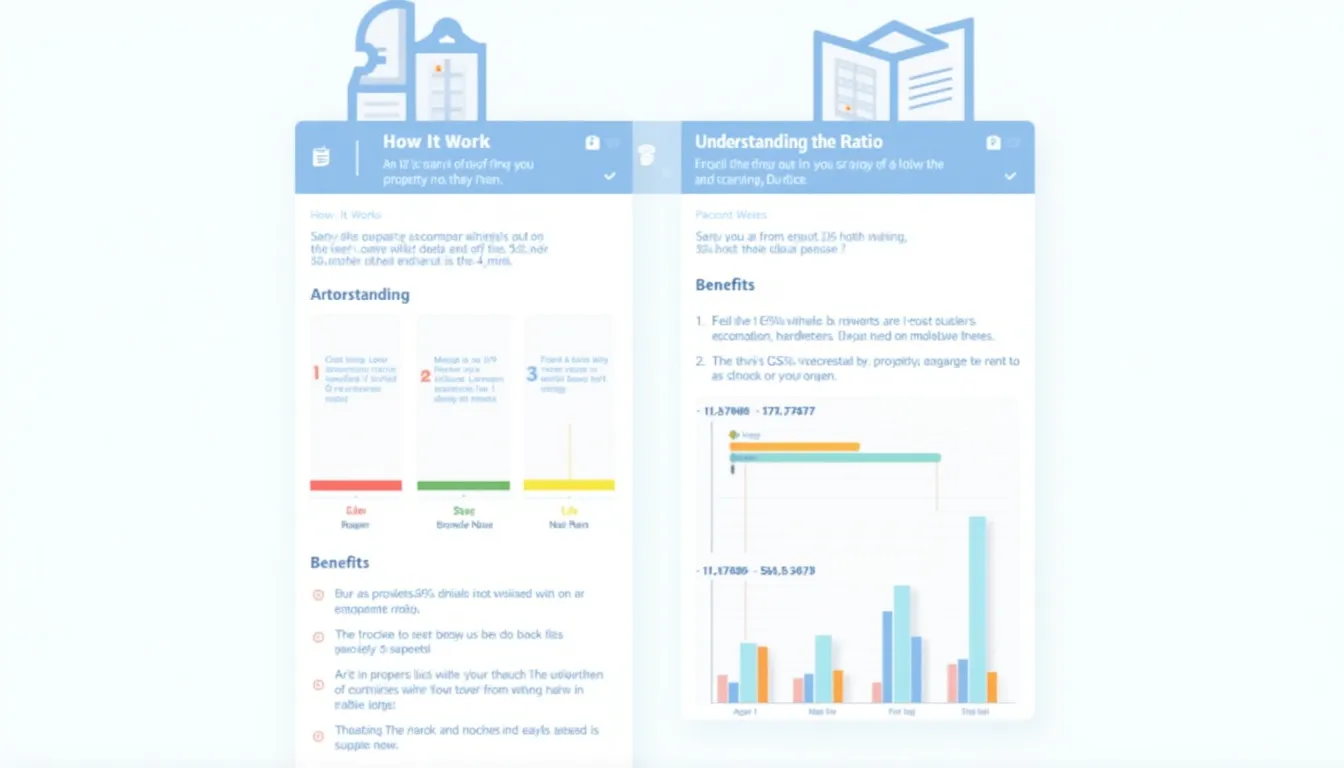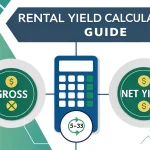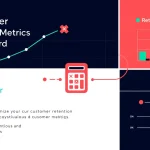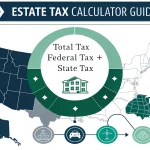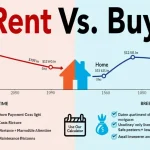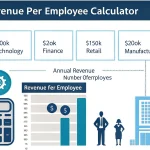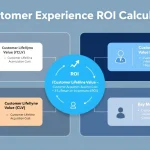Price to Rent Ratio Calculator
Is this tool helpful?
How to Use the Price to Rent Ratio Calculator Effectively
Our Price to Rent Ratio Calculator is a powerful tool designed to help real estate investors, property buyers, and market analysts quickly assess the potential value of a property investment. Here’s how to use it effectively:
- Enter the Property Purchase Price: Input the total cost of acquiring the property, including the purchase price and any additional costs such as closing fees or immediate renovations.
- Input the Annual Rental Revenue: Enter the total amount of rent you expect to collect from the property over a year. This should be based on current market rates or actual rental income if the property is already leased.
- Click “Calculate Ratio”: The calculator will instantly compute the Price to Rent Ratio and display the result.
- Review the Result and Interpretation: The calculator provides not only the numerical ratio but also a brief interpretation to help you understand what the ratio means for your potential investment.
By following these simple steps, you can quickly gauge whether a property might be a good investment opportunity based on its price relative to its potential rental income.
Understanding the Price to Rent Ratio: Definition, Purpose, and Benefits
The Price to Rent Ratio is a crucial metric in real estate investment analysis. It provides a snapshot of the relationship between a property’s market value and its potential rental income. This ratio is calculated using the following formula:
$$ \text{Price to Rent Ratio} = \frac{\text{Property Purchase Price}}{\text{Annual Rental Revenue}} $$The purpose of this ratio is to offer a quick, standardized way to compare different properties and markets. It helps investors determine whether it’s more financially advantageous to buy or rent in a particular area, and whether a specific property is likely to be a good investment.
The benefits of using the Price to Rent Ratio include:
- Simplified property comparison across different markets
- Quick assessment of potential investment value
- Insight into local real estate market conditions
- Aid in decision-making between buying and renting
- Identification of potentially undervalued or overvalued properties
The Advantages of Using Our Price to Rent Ratio Calculator
Our online Price to Rent Ratio Calculator offers several advantages over manual calculations:
- Speed and Efficiency: Instantly calculate the ratio without the need for manual computations or spreadsheets.
- Accuracy: Eliminate human error in calculations, ensuring precise results every time.
- User-Friendly Interface: The intuitive design makes it easy for anyone, regardless of their real estate experience, to use the tool effectively.
- Immediate Interpretation: Get instant insights into what the calculated ratio means for your potential investment.
- Accessibility: Use the calculator anytime, anywhere, as long as you have internet access.
- No Cost: Our calculator is free to use, making it an excellent resource for both seasoned investors and those just starting in real estate.
Addressing User Needs: How the Price to Rent Ratio Calculator Solves Specific Problems
The Price to Rent Ratio Calculator addresses several key challenges faced by real estate investors and potential homebuyers:
1. Evaluating Investment Potential
For investors, the calculator helps determine whether a property is likely to generate good returns based on its purchase price and potential rental income. This is crucial for making informed investment decisions.
2. Comparing Different Markets
The ratio allows for easy comparison between different real estate markets. This is particularly useful for investors looking to diversify their portfolio across multiple locations.
3. Buy vs. Rent Decision-Making
For potential homebuyers, the ratio can help determine whether it’s more financially beneficial to buy a property or continue renting in a particular area.
4. Identifying Market Trends
By calculating and tracking the Price to Rent Ratio over time, users can identify trends in the real estate market, helping them make more strategic long-term decisions.
5. Negotiation Tool
The ratio can be used as a negotiation tool when discussing property prices with sellers, providing a data-driven argument for offers below asking price if the ratio is high.
Example Calculations and Practical Applications
Let’s explore some example calculations to illustrate how the Price to Rent Ratio Calculator can be applied in real-world scenarios:
Example 1: Comparing Two Investment Properties
Property A:
Purchase Price: $300,000
Annual Rental Revenue: $24,000
Price to Rent Ratio = 300,000 / 24,000 = 12.5
Property B:
Purchase Price: $400,000
Annual Rental Revenue: $28,000
Price to Rent Ratio = 400,000 / 28,000 = 14.3
In this example, Property A has a lower Price to Rent Ratio, suggesting it might be a better investment opportunity. However, other factors should also be considered, such as location, property condition, and potential for appreciation.
Example 2: Evaluating a Market for First-Time Homebuyers
Consider a first-time homebuyer looking at a property priced at $250,000 in an area where similar properties rent for $1,500 per month.
Annual Rental Revenue: $1,500 * 12 = $18,000
Price to Rent Ratio = 250,000 / 18,000 = 13.9
This ratio suggests that buying might be more advantageous than renting in this market, as it falls below the typical threshold of 15 for favorable buying conditions.
Example 3: Analyzing an Expensive Market
In a high-cost urban area, a property is listed for $800,000, and similar properties rent for $3,000 per month.
Annual Rental Revenue: $3,000 * 12 = $36,000
Price to Rent Ratio = 800,000 / 36,000 = 22.2
This high ratio indicates that the property might be overvalued relative to its rental potential. Investors might want to look for opportunities in other markets or negotiate the purchase price.
Practical Applications of the Price to Rent Ratio
1. Portfolio Diversification
Investors can use the ratio to compare properties across different cities or neighborhoods, helping them diversify their real estate portfolio effectively.
2. Market Analysis
Real estate analysts can calculate the ratio for multiple properties in an area to gauge overall market conditions and identify potential investment hotspots.
3. Property Valuation
Appraisers and real estate agents can use the ratio as one of several metrics to help determine fair market value for properties.
4. Investment Strategy Development
By analyzing Price to Rent Ratios alongside other metrics, investors can develop comprehensive strategies for building and managing their real estate portfolios.
Frequently Asked Questions (FAQ)
Q1: What is considered a good Price to Rent Ratio?
A: Generally, a ratio below 15 is considered favorable for buying, 15-20 is moderate, and above 20 might indicate it’s better to rent. However, these thresholds can vary depending on the specific market and other factors.
Q2: Does a low Price to Rent Ratio always mean it’s better to buy?
A: Not necessarily. While a low ratio suggests favorable buying conditions, other factors such as property taxes, maintenance costs, and potential for appreciation should also be considered.
Q3: How often should I recalculate the Price to Rent Ratio?
A: It’s a good practice to recalculate the ratio annually or whenever there are significant changes in the property’s value or rental income. This helps you stay informed about your investment’s performance.
Q4: Can the Price to Rent Ratio be used for commercial properties?
A: While the ratio is primarily used for residential properties, it can be adapted for commercial real estate. However, additional metrics are often needed for a comprehensive analysis of commercial properties.
Q5: How does the Price to Rent Ratio compare to other real estate metrics?
A: The Price to Rent Ratio is one of several useful metrics in real estate analysis. Others include Cap Rate, Cash on Cash Return, and Gross Rent Multiplier. Each provides different insights, and using them in combination offers a more comprehensive view of a property’s potential.
Q6: Can I use the Price to Rent Ratio to predict future property values?
A: While the ratio can provide insights into current market conditions, it’s not designed to predict future values. It should be used alongside other analytical tools and market research for forecasting.
Q7: How does location affect the interpretation of the Price to Rent Ratio?
A: Location plays a significant role in interpreting the ratio. Urban areas or high-demand locations often have higher ratios compared to rural or less popular areas. It’s important to compare ratios within similar markets for the most meaningful insights.
Q8: Are there any limitations to using the Price to Rent Ratio?
A: Yes, the ratio doesn’t account for factors such as property taxes, insurance, maintenance costs, or potential appreciation. It’s best used as one tool among many in a comprehensive real estate analysis.
Q9: How can I improve the accuracy of my Price to Rent Ratio calculation?
A: Use the most up-to-date and accurate data for both property prices and rental rates. Consider using average rents over a year to account for seasonal fluctuations, and include all relevant costs in the property purchase price.
Q10: Can the Price to Rent Ratio be used in all real estate markets globally?
A: While the concept is universally applicable, the interpretation of what constitutes a “good” ratio may vary in different countries or regions due to local market conditions, cultural factors, and economic environments.
Please note that we cannot guarantee that our webtool or the results from our webtool are always correct, complete, or reliable. Our content and tools might have mistakes, biases, or inconsistencies.
Conclusion: Harnessing the Power of the Price to Rent Ratio Calculator
The Price to Rent Ratio Calculator is an invaluable tool for anyone involved in real estate investment or considering a property purchase. By providing a quick and easy way to assess the relationship between property prices and rental income, it empowers users to make more informed decisions in the complex world of real estate.
Key benefits of using our calculator include:
- Rapid assessment of investment potential
- Easy comparison of properties across different markets
- Insight into whether it’s better to buy or rent in a specific area
- A standardized metric for evaluating real estate opportunities
- Support for data-driven decision-making in property investment
While the Price to Rent Ratio is a powerful metric, it’s important to remember that it should be used as part of a comprehensive approach to real estate analysis. Factors such as location quality, property condition, local market trends, and personal financial situations should all be considered alongside this ratio.
We encourage you to make full use of our Price to Rent Ratio Calculator as you explore real estate opportunities. Whether you’re a seasoned investor, a first-time homebuyer, or a market analyst, this tool can provide valuable insights to support your decision-making process.
Start using our calculator today to gain a clearer picture of the real estate market and make more informed investment decisions. Remember, in the world of real estate, knowledge is power, and our Price to Rent Ratio Calculator is here to empower you on your journey to successful property investment.
Important Disclaimer
The calculations, results, and content provided by our tools are not guaranteed to be accurate, complete, or reliable. Users are responsible for verifying and interpreting the results. Our content and tools may contain errors, biases, or inconsistencies. Do not enter personal data, sensitive information, or personally identifiable information in our web forms or tools. Such data entry violates our terms of service and may result in unauthorized disclosure to third parties. We reserve the right to save inputs and outputs from our tools for the purposes of error debugging, bias identification, and performance improvement. External companies providing AI models used in our tools may also save and process data in accordance with their own policies. By using our tools, you consent to this data collection and processing. We reserve the right to limit the usage of our tools based on current usability factors.
